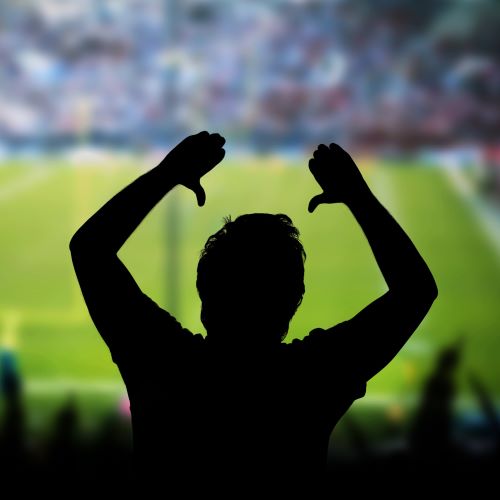Most football fans who have witnessed racism among fellow spectators at sporting matches in recent years have failed to report it, a new University of South Australia study has found.
Australia’s first large-scale study of its kind has examined the extent of racist behaviour and language among spectators of the three major men’s football leagues – AFL, NRL and A-League.
In a survey of more than 2000 spectators it was found that half of AFL fans had witnessed racist ‘barracking’ such as name calling at matches compared to 36% of NRL fans and 27% of A-League fans.
Fans of all three sports say the situation has worsened in the last two years.
Only 3% of AFL fans, 2% of NRL fans and 1% of A-League fans had used the phone-text hotline promoted at major sporting stadiums to report incidents of racist abuse by other spectators.
UniSA senior lecturer in sport and management Dr Jamie Cleland says this outlines a significant discrepancy between observing racism and reporting it, considering that many spectators witness bigoted abuse.
“These findings are consistent with research on the broader phenomenon of bystander racism in Australian society,” he says. “The effectiveness of penalties relies on people speaking up and the response of witnesses. Sports fans can demonstrate a sense of solidarity with those who are the subject of the abuse.”
Racist barracking ranges from ‘casual’ or incidental bigotry – where the speaker may be unaware that their language is racially derogatory – to hard-core racists who take the opportunity to be relatively anonymous in a crowd and express hatred towards people of colour.
Dr Cleland says despite greater awareness in the media and by sporting bodies of what constitutes racist barracking, poor behaviour by spectators at games and on social media continues to be an issue.
“The three professional leagues have put in place various things to address this type of behaviour such as having anonymous reporting hotlines and publicising lifetime bans for racist fans but if racist behaviour and language isn’t consistently challenged, then this can reinforce and enhance an individual’s position and it will be more likely to continue,” he says.
Australia’s best-supported sport – Australian rules football – has often been a site for reflecting racial differences. Aboriginal professional footballers comprise about 12% in the AFL and NRL, which is an overrepresentation given that the country’s Aboriginal population is just under 3%.
For many years, Aboriginal athletes in Australia have faced racial abuse from field opponents and spectators.
In 1993, Indigenous St Kilda player, Nicky Winmar, confronted Collingwood spectators who were racially abusing him by defiantly raising his shirt and pointing at the colour of his skin. The gesture ignited a national discussion on racism in sport.
Two years later Essendon player Michael Long objected to being racially vilified by an opponent – a moment that catalysed the creation of the Racial and Religious Vilification Policy in 1995.
Since then, Aboriginal AFL players including Adam Goodes, Lance Franklin and Eddie Betts have continued to be racially abused by spectators. Earlier this month, a Hawthorn player was racially vilified on social media, leading to an emotional response from coach Sam Mitchell who condemned the behaviour.
UniSA lecturer and researcher Connor MacDonald says that racist behaviour or language by fans is often viewed as unintentional or non-malicious rather than a deeply ingrained prejudice.
“Some of the AFL fans who took part in our study argued that watching live sport brings out irregular emotions in fans. They don’t think it’s ‘real’ racism and at the very least it’s not part of that person’s core beliefs and values,” he says.
“Overt displays of racism can also be blamed on ignorance or being said ‘in the heat of the moment’ or as ‘a bit of banter’. This just contributes to a denial that there is a more substantive underlying problem in wider society.”
The AFL’s zero tolerance approach to racial abuse has already seen life bans given to nine spectators since the penalty was lifted from a three-year suspension at the start of the 2023 season.
Dr Jamie Cleland says unless bystanders are willing to report racism to authorities and challenge bad behaviour, it is unlikely racism in Australian men’s sport will be eradicated.
“We can’t be silent observers to racist behaviour. The fight against bigotry can’t be left to Aboriginal people and people from culturally diverse backgrounds. Responsibility lies with white Australians who are generally privileged not to be objects of racism,” he says.
“For those who hold racist views and are willing to express them publicly there needs to be robust action enforced through stringent measures and punishments.
“Even though we are seeing a change of approach among some Australian sports governing bodies, if racist actions aren’t consistently challenged, this can reinforce and enhance the person’s position and make it more likely to continue.”

